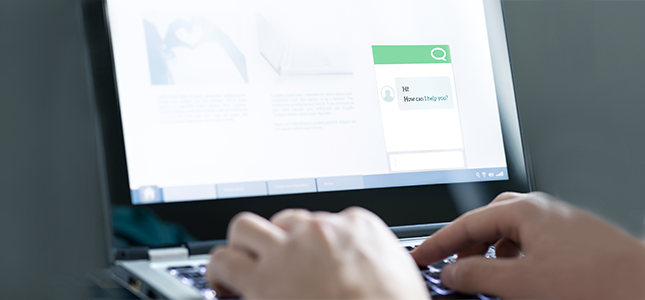One of the effects we’ve seen from the COVID-19 crisis is that the digital evolution of industries has accelerated from both a consumer and business perspective. But with the shift to digital and AI-driven applications happening so rapidly, companies are grappling with new challenges such as, how do we deliver frictionless customer experiences in a virtual environment?
At TTEC, we faced this very question as we worked with our clients to see to it that their customers received uninterrupted support. I shared many of the key insights, lessons, and best practices that emerged from our experience on a recent webinar, Effortless CX Strategies that Help Brands Outperform the Competition. If you missed it, have no fear, here are the key takeaways from the discussion.
EXDX = CX
Employee experience powered by digital experience equals customer experience or EXDX = CX encapsulates the way we look at our business and how we see people and technology coming together during the crisis and beyond. We believe that it’s more impactful when people and technology work together to deliver an exceptional customer experience instead of being at odds with each other.
Case in point: artificial intelligence. When artificial intelligence is deployed in the right way, it can be incredibly helpful in removing friction from the customer experience. This is why AI applications have evolved into directed AI. Businesses have learned that open-ended AI, where the goal is to have a natural, human-like conversation, doesn’t really work.
A better approach is directed AI, where the technology is intent-based and used to resolve issues for customers that are predictable and predetermined or assists employees by quickly serving up information and flagging patterns.
Meet Louie
There are many examples where automation has surged as companies look for ways to reduce costs and enable business continuity during these uncertain times. But in addition to removing friction from the customer experience, digital solutions can also be applied to EX in today’s virtual work environment.
For example, prior to the pandemic outbreak, TTEC built a conversational AI-powered bot named Louie to provide job candidates and employees with streamlined, 24/7 assistance. Louie has become integral to our recruitment, onboarding, and engagement practices as nearly everything became virtual.
By texting Louie, the bot can help candidates submit their application, schedule an interview, and guide them through the interview process. From there, Louie ushers new hires—and managers—through onboarding by sending a welcome message with a welcome video from our CEO, Ken Tuchman, and collects information to be shared with the employee’s supervisor such as their preferred name and what makes them laugh.
As employees move further into their career at TTEC, Louie shares information about key systems, employee benefits, and more. Louie also reminds supervisors when an employee’s work anniversary and other milestones are approaching. Simply put, Louie is an AI bot that fosters human connections and strong relationships between supervisors and associates. In fact, in a recent survey, 89% of candidates told us that Louie made them more excited about a career at TTEC.
Leverage AI-simulated training
Training must also be adapted to a virtual environment. No one wants to be lectured for hours in person or online. We quickly realised that we needed to expand the asynchronous, simulation-based courses that we had started to develop before the crisis. As a result, more employees—and clients—are using our AI-powered RealPlay bot, which provides enhanced simulated learning experiences that users can access from any device at their convenience.
We’ve also learned that small tweaks such as conducting training sessions over video conferencing (which reduces multitasking) and providing trainers with two screens to maintain visual contact and monitor the employee’s work can make a significant difference.
Harness those (remote) employee insights
Many experienced frontline associates have insights to optimize digital technologies and customer processes to proactively remove customer friction. But how do you get teams to collaborate on ideas strategically in a remote environment?
Since 2019, we’ve been developing a method and processes by which frontline associates can proactively document their observations and ideas and develop them into actionable insights to present to the client. For instance, 1/3 of proactive solutions include optimizing the digital technologies from artificial intelligence engines, RPA and RDA that can drive improved impact and support as well as cost savings.
Enabling remote employees to offer proactive solutions is more important than ever. Savvy organisations will look to maximise their workforce and the customer experience by leveraging employee insights in a systematic way. In fact, we’re actively adapting and expanding our Proactive Solutions approach for a remote workforce with more collaborative online tools, coaching strategies, and more.
Keep the engagement fresh
In addition to providing employees with the digital tools they need to do their job well, it’s important to help employees stay connected and engaged. We found it interesting that after shifting to remote work, more associates became active in our gamified badging system, which allows participants to earn points for completing online courses and other activities that can be exchanged for monetary and non-monetary rewards. Online gamified rewards systems are an excellent way for remote teams to stay connected and engage in friendly rivalries.
And just because an activity worked at the start of the pandemic, that doesn’t mean it will continue to be effective. Engagement activities grow stale; it’s important to change it up. For instance, we replaced a virtual happy hour with dinner kits that were sent to teammates. It was a great success and employees enjoyed being able to share a new experience. Executive drop-ins are another way to add a fresh aspect to virtual get-togethers.
Shift forward together
When the coronavirus crisis broke out, organisations were in crisis response mode. Now, business leaders are focusing on moving forward to meet customers’ increasingly digital-first expectations as they plan for a recovery. Leveraging artificial intelligence and digital tools to help employees work more effectively and efficiently is critical to delivering a CX that feels effortless to the customer. So is adapting the company culture to better fit a largely remote workforce. Together, these steps will go a long way in helping organisations prepare for a better tomorrow.




